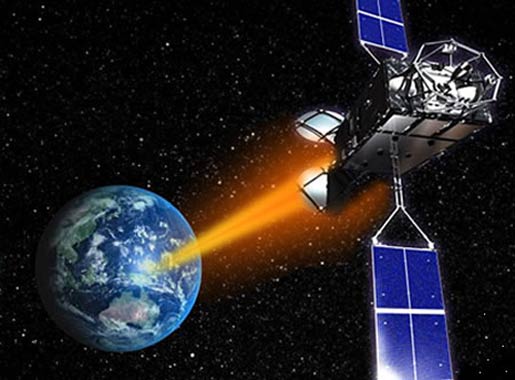From the Space to the Earth: a New Concept of Solar Panels

geoawesomeness.com
One of the most important problems of RES (Renewable Energy Sources) is the intermittence. If we talk about solar power, the persistent problems are mainly two: it does not work at nighttime and it is very inefficient during bad weather. In order to solve those problems, researchers from the Japan Space Systems and the Japan Aerospace Exploration Agency are developing a spacecraft with a square screen of solar panels, which will use microwaves to transfer the energy produced in the space down to the earth.
The overall area of the solar screen will measure more than 2 km (1.2 miles) along each side. The Space Solar Power System (SSPS) will be not affected by weather or nighttime and it will be positioned in order to constantly face the sun, producing almost ten times as much power as earth-based photovoltaic modules. The main problem is the transmission of the energy from the spacecraft to the earth, even if in March the Japan Space Systems converted 1.8 electric kW into microwaves and they were transmitted over a distance of 60 m (180 feet) to an antenna where it was converted back into electricity. Why microwaves? The scientist and engineer Daisuke Goto explained that they travel in a straight line and they can penetrate clouds without any problems. According to the researchers, the receiver on the earth will be a one-mile-diameter-antenna floating on the ocean and linked to the power grid. In the website of the Japan Space Systems they clarify what is the roadmap of the transmission technology. First step will be a 100 kW demonstration on orbit, then they will try with 10 MW, 250 MW and finally with 1 GW, which should be the commercial system.
One of the biggest problem of this technology will be the transportation of all the SSPS components and assembling them in the space. The scientists hope that the lifespan of this system would be around 40 years and the maintenance and repairs will be carried out by robots. Goto told that “it will need at least 30 years before the first SSPS is ready to go into operation” but it will be worth it because “we estimate that one SSPS unit will be able to produce around the same amount of energy as one nuclear reactor. Surely this system will not solve the human energy problems but we hope it will contribute as a future, efficient energy source”.
Header image credits: japantimes.co.jp
